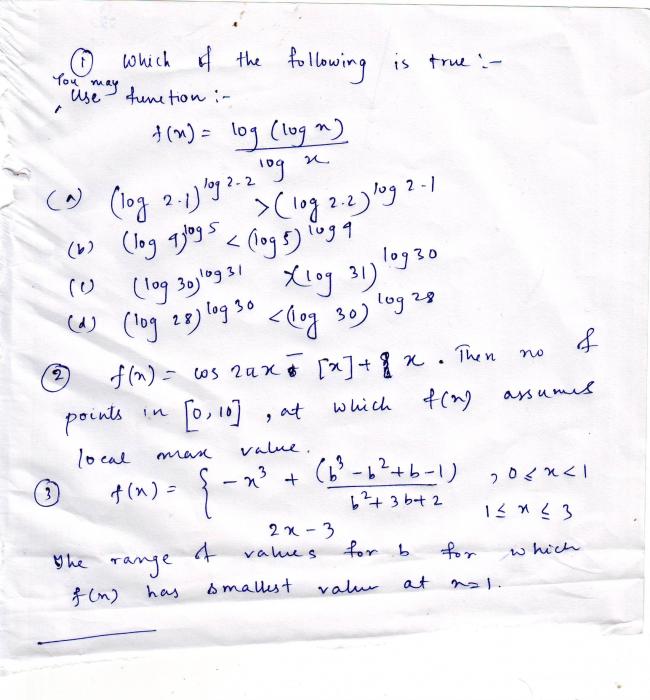2 Answers
pritishmasti ...............
·2010-08-20 11:33:24
Q1 the function :
f(x) = log(logx)logx
is increasing for x< ee(almost equal to 10)
and decreasing for x > ee
so for x≡(-∞,ee)
f(x') < f(y') (where x' < y') --------(1)
and for x≡(ee,∞)
f(x') > f(y') (where x' < y')-----------(2)
put x'=4 and y'=5 in 1st equation
and put x'=30 and y'=31 in 2nd equation
so answer is (b,c)
Euclid
·2010-09-16 11:50:32
3) f(1) < f(x)
hence
-1 + b3-b2+b-1b2+3b+2 > 2(1) - 3
=> (b-1)(b2+1)(b+1)(b+2) >0
which gives
b\in (-2,-1)\bigcup{}(1,\propto )
